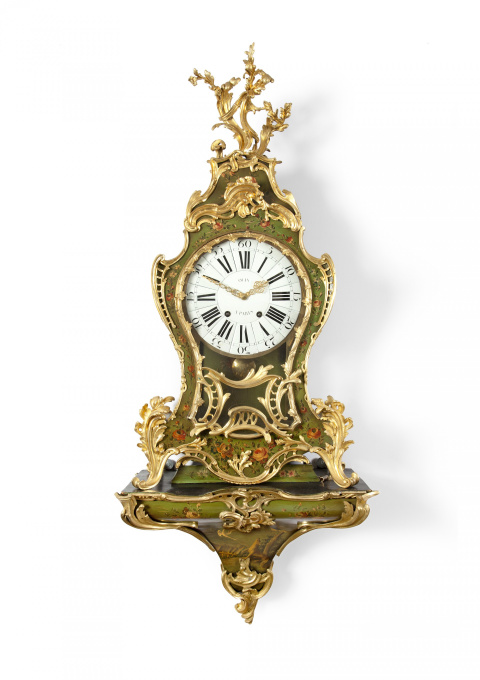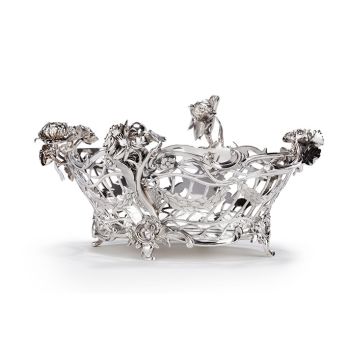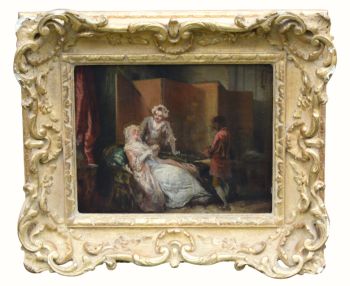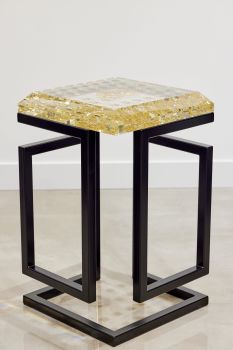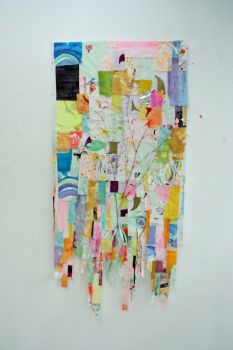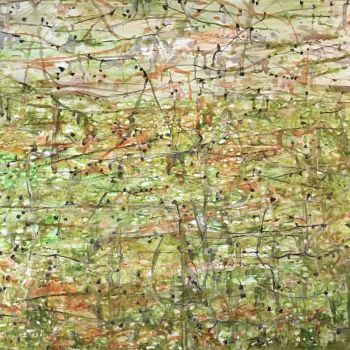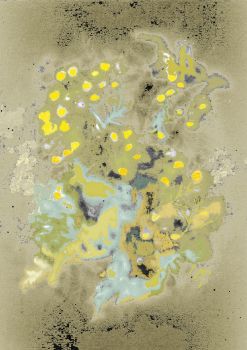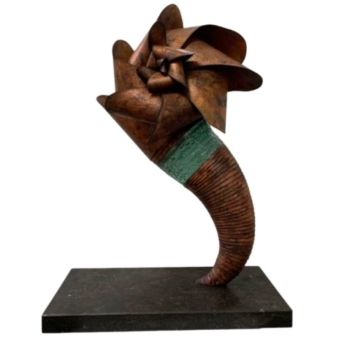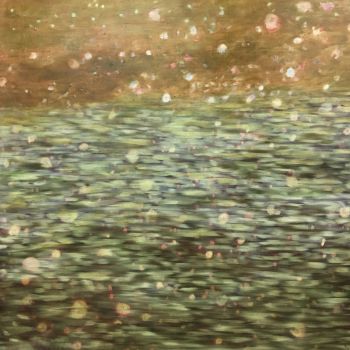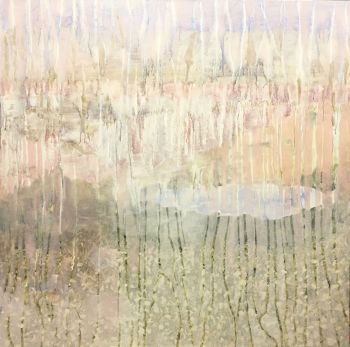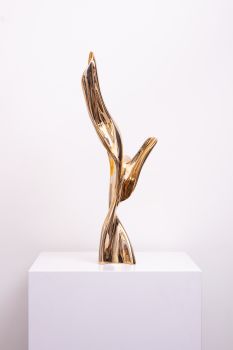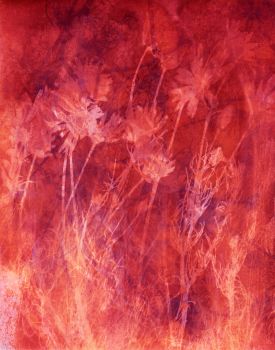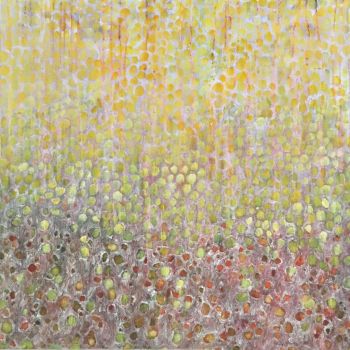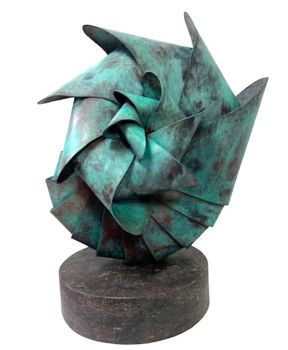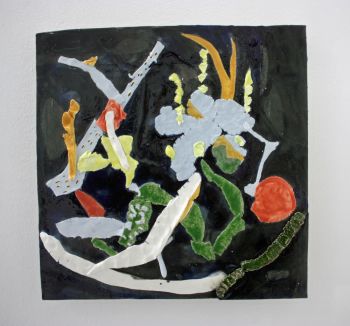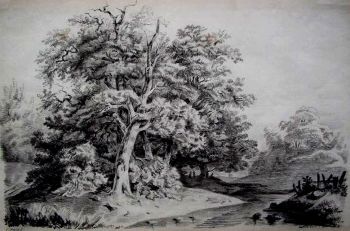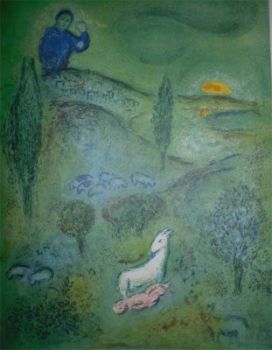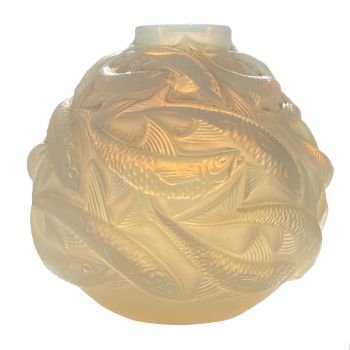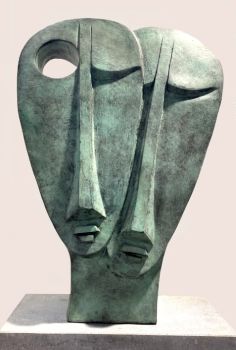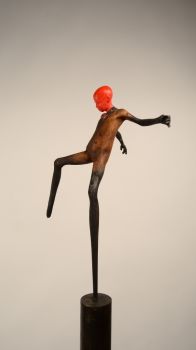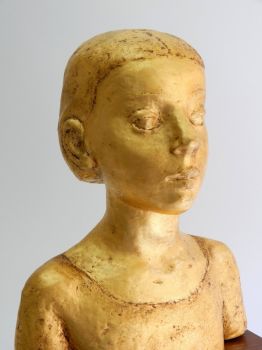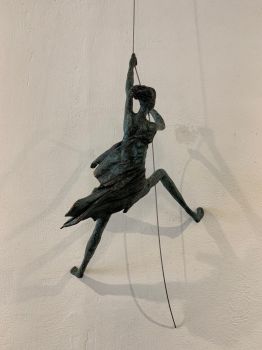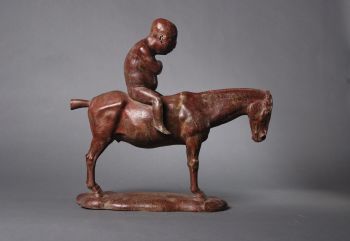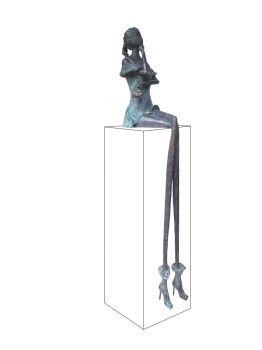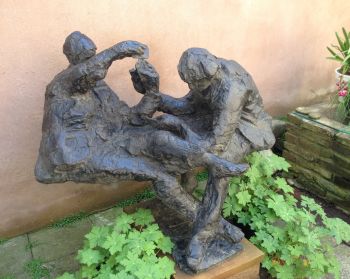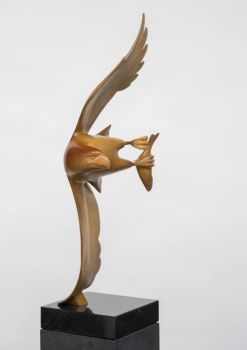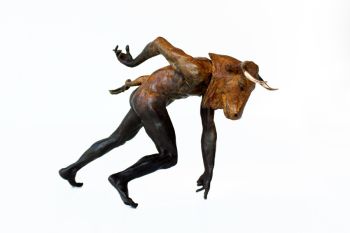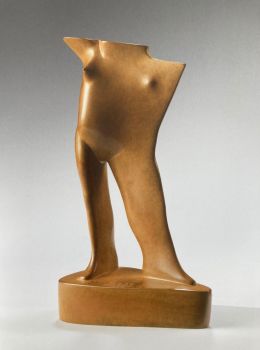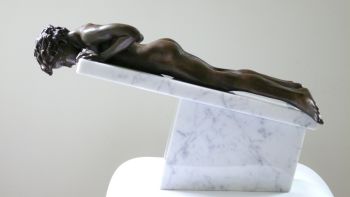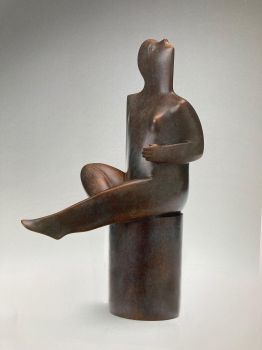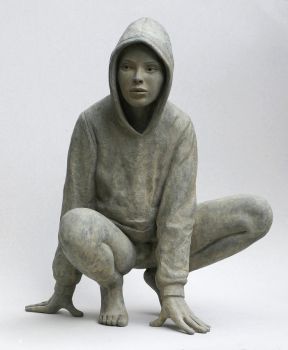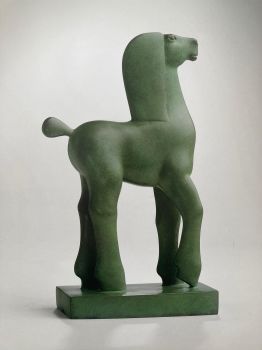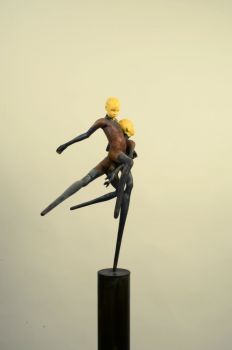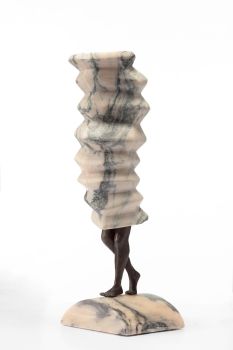A Louis Quinze Console Clock 'Grand Cartel' late 18th
Jean-Charles Olin
BronzeOuroMetalEsmalteDourado
150 ⨯ 61 ⨯ 30 cm
Atualmente indisponível via Gallerease
- Sobre arteA LOUIS XV CONSOLE CLOCK ‘GRAND CARTEL’
signed on the dial ‘olin à paris’ | 3rd quarter 18th century | 150 x 61 x 30 cm
A Louis XV ormolu mounted vernis Martin console clock, ‘grand cartel’, signed on the white dial ‘olin à paris’. White enamel chapters surround the centre pierced ormolu hands. The case is decorated overall Vernis Martin with flowers and on the console is depicted a scene taken from ‘Fables de La Fontaine’, ‘Le coq et le renard’.
In French interior design, vernis Martin is a type of imitation lacquer named after the French brothers Guillaume and Etienne-Simon Martin. It imitated Chinese lacquer and European subjects and was applied to a wide variety of items, from furniture to coaches. It is said to have been made by heating oil and copal and then adding Venetian turpentine.
Jean-Charles Olin’s (d. after 1789) name is associated with a number of examples. Notably a Louis XV gilt bronze mounted Meissen porcelain pendule ‘à l’éléphant’ in the Rijksmuseum, Amsterdam and another clock housed at Schloss La Fasanerie, Fulda. Olin first worked as an ouvrier libre but was received as a maître-horloger in October 1776. He served as deputé of his guild later in 1777. Olin used some of the best Parisian case makers. They included the ébéniste Antoine Foullet, the ébéniste doreur Jean Goyer and the esteemed bronzier Jean-Joseph de Saint-Germain.
Jean de La Fontaine was a French poet and fabulist, who lived and worked during the 17th century. For special contributions to French literature he was elected to the French Academy of Sciences in 1684. Published in 1668, the collection of fables brought La Fontaine international fame. The works of the ancient Greeks, Indian storytellers, other fabulists and folk tales about animals serve as a source of inspiration for the author. Drawing motives from these works, La Fontaine brought new life to the fable genre. - Sobre artistaJean-Charles Olin (falecido depois de 1789) foi um dos mais importantes relojoeiros parisienses do final do século XVIII. Cunhado do relojoeiro Jean-Gabriel Imbert, ele inicialmente trabalhou por conta própria, depois se tornou mestre em 1776 e abriu sua própria oficina no attach des Quinze-Vingts. Com uma reputação em rápido crescimento, em 1777 foi eleito deputado de sua corporação. Como os melhores relojoeiros de seu tempo, ele procurou os melhores bronziers para suas caixas de relógio, incluindo Antoine Foullet, Robert Osmond e Jean-Joseph de Saint-Germain. Seus relógios foram adquiridos por alguns dos mais importantes colecionadores do século XVIII. Os relógios de Olin são mencionados nos inventários de inventário do advogado Jacques-Augustin Auvray, de Marie-Philippe Donneau, marquês de Visé e a viúva do secretário do rei, Louis Paris de Treffonds.
Artwork details
Categoria
Assuntos]
Estilo
Material e Técnica
Cor
Related artworks
Artista Desconhecido
A Surinam-themed Amsterdam long-case clock1746 - 1756
Preço em pedidoZebregs & Röell - Fine Art - Antiques
 Com curadoria de
Com curadoria deGallerease Magazine
1 - 4 / 17- 1 - 4 / 24
- 1 - 4 / 24
- 1 - 4 / 24

